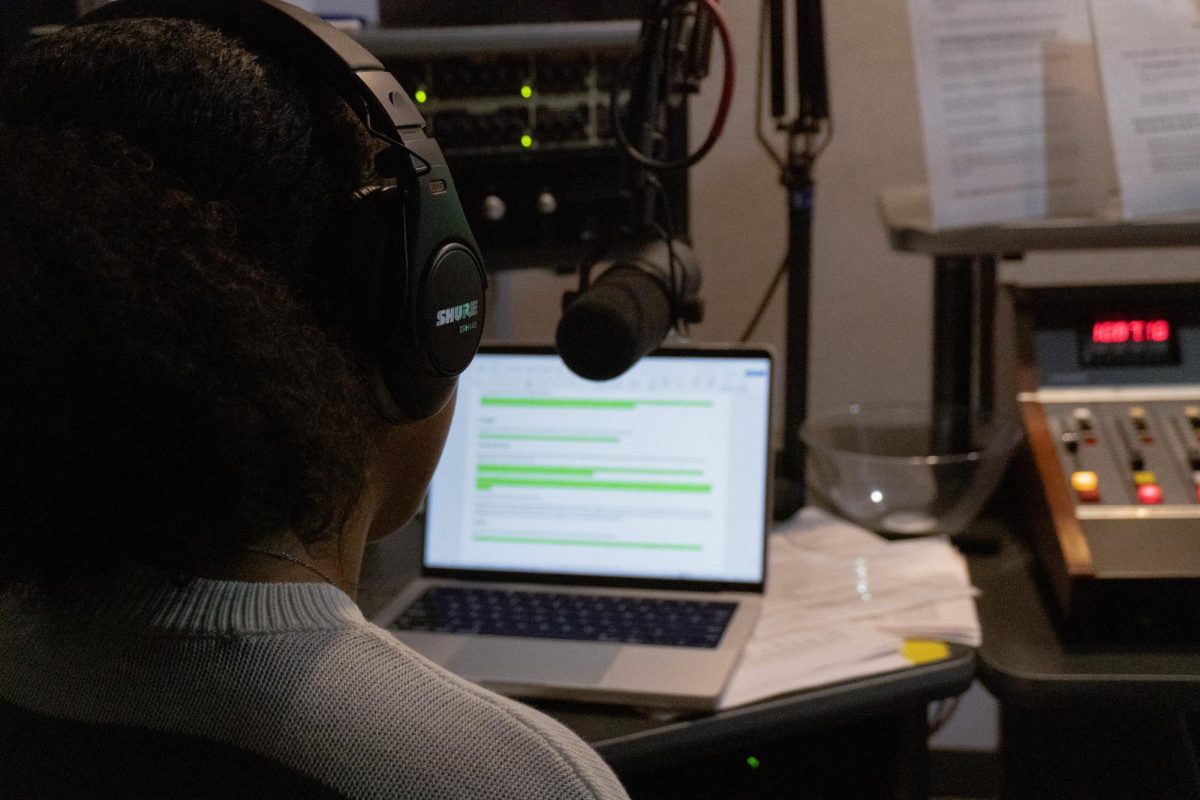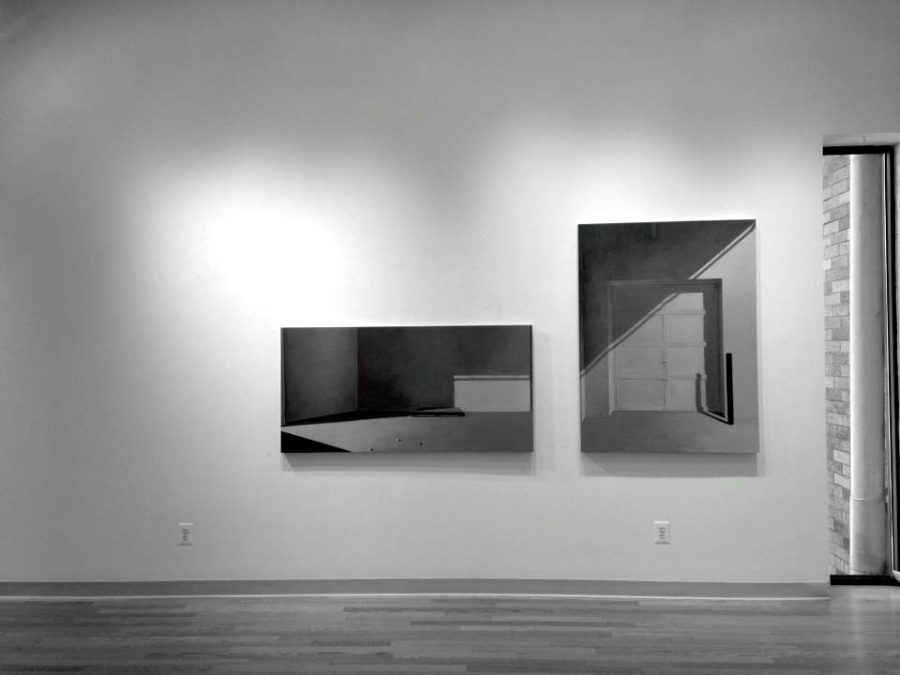How well do we even know the spaces in which we live, those that we see every day? How much do we look at something a million times but never really see it? These are questions with which Lillian Bayley Hoover wrestles in the current exhibit at the Julio Fine Arts Gallery, Borders.
Hoover’s work, oil paint on wood panels, captures what at first appears to be perfectly ordinary scenes from a perfectly ordinary neighborhood. There are houses, bridges, fences, posts and dumpsters, but anything beyond a cursory glance reveals the strange imperfections that lurk just beneath the surface of any seemingly normal scene.
“Mended,” for instance, depicts a fence whose gate has broken and was repaired, not with a new latch, but with a piece of string. There is a loving kind of humor in this depiction, the familiar impulse that leads us to get things done fast rather than right. There is something appealing in this, in, as Hoover says, evidence of human endeavor that is often overruled and undermined. Nature always creeps in eventually when we try to control the world around us.
“Storage” also operates with this kind of arresting strangeness. The piece depicts a squat storage building and the fence in front of it. Halfway through, the roof of the building drops off and then continues uninterrupted, creating two halves of the building with two different sides. The fence in front changes height at the exact same spot, tricking the eye into seeing a straight line between fence and roof, but here’s the kicker: where the roof is lower, the fence is higher. There’s a quiet discomfort about it, albeit a charming one.
The composition of each painting heightens this sense of strangeness and embraces the kind of awkwardness that Hoover seeks out. “Mended” is a diptych, the two wood panels separated by a small gap. (Hoover painted them with a wood block in between the panels to make sure the spacing turned out right.) There seems to be almost no logic governing the placement of this gap relative to the image, however; it is not exactly at the corner of the fence, or the latch of the gate, or the border of the house in the background. In fact, it is not exactly anywhere. It separates house from chimney, breaks up the gate and separates the telephone wire behind the house. “Storage” is made of multiple panels held together, but the imaginary line created between roof and fence is several inches from a seam, and the panels are not even the same size.
This, it must be said, is entirely purposeful. Hoover, who works from cell phone photographs taken on neighborhood walks, includes details and parts of scenes that, by all accounts, should have been deleted or cut off. In “Posts,” two upright white posts stand in front of a white building, kept from blending into the background only by virtue of the shadow being cast across the building. On the left side of the painting, less than a centimeter from the edge, is a drainpipe running up the side of the building. It would have been all too easy for Hoover to simply crop the image an inch or two more, but her work delights in these strange inclusions.
“Loading Dock,” perhaps the most impressive piece in the exhibition, is particularly representative of Hoover’s goals. It is another diptych, its two halves completely different in size. It depicts exactly what its name suggests: a perfectly ordinary loading dock, containing nothing more interesting than a large door, a wooden pallet and a few pieces of trash. Yet there is all of that strangeness, just waiting for someone to notice. At the very edge of the right panel, barely visible, is a corner; on the left panel, the background wall ends just before the panel does. Most arresting of all, the shadows are going in two different directions—the piece, flat against the wall, nevertheless depicts two different sides of the room, the sunlight thus hitting them differently.
As technically impressive as Hoover’s work is, it still begs the question: why paint it at all? This, of course, goes back to the original question. Hoover sees the act of painting as a way of knowing the world; she says that “things become valuable to us as a result of us paying attention,” that appreciation comes from attention rather than the other way around. She says that her husband jokes that she likes to paint “boring” things, which is precisely the point. Even the most ordinary objects become precious when we spend enough time with them.
Borders will be up in the Julio Fine Arts Gallery from February 21 through March 30.













































































































